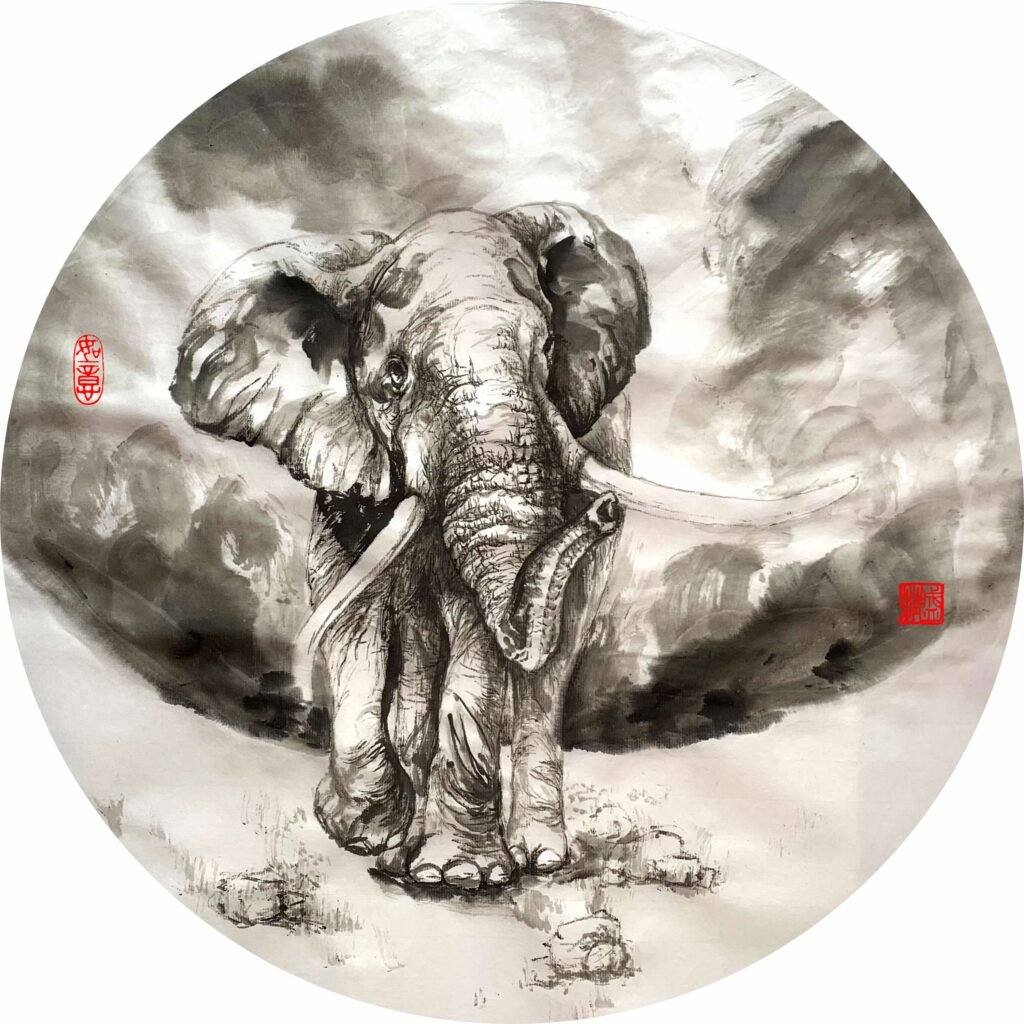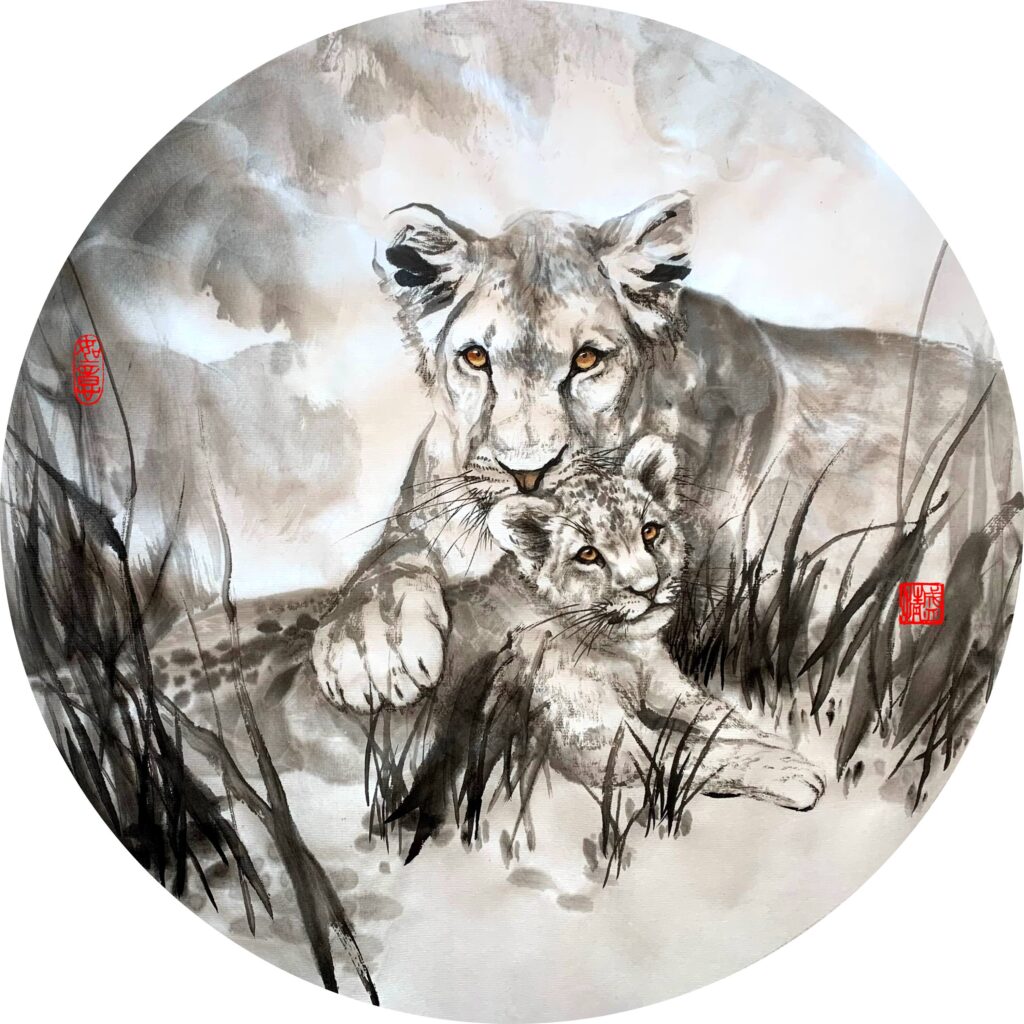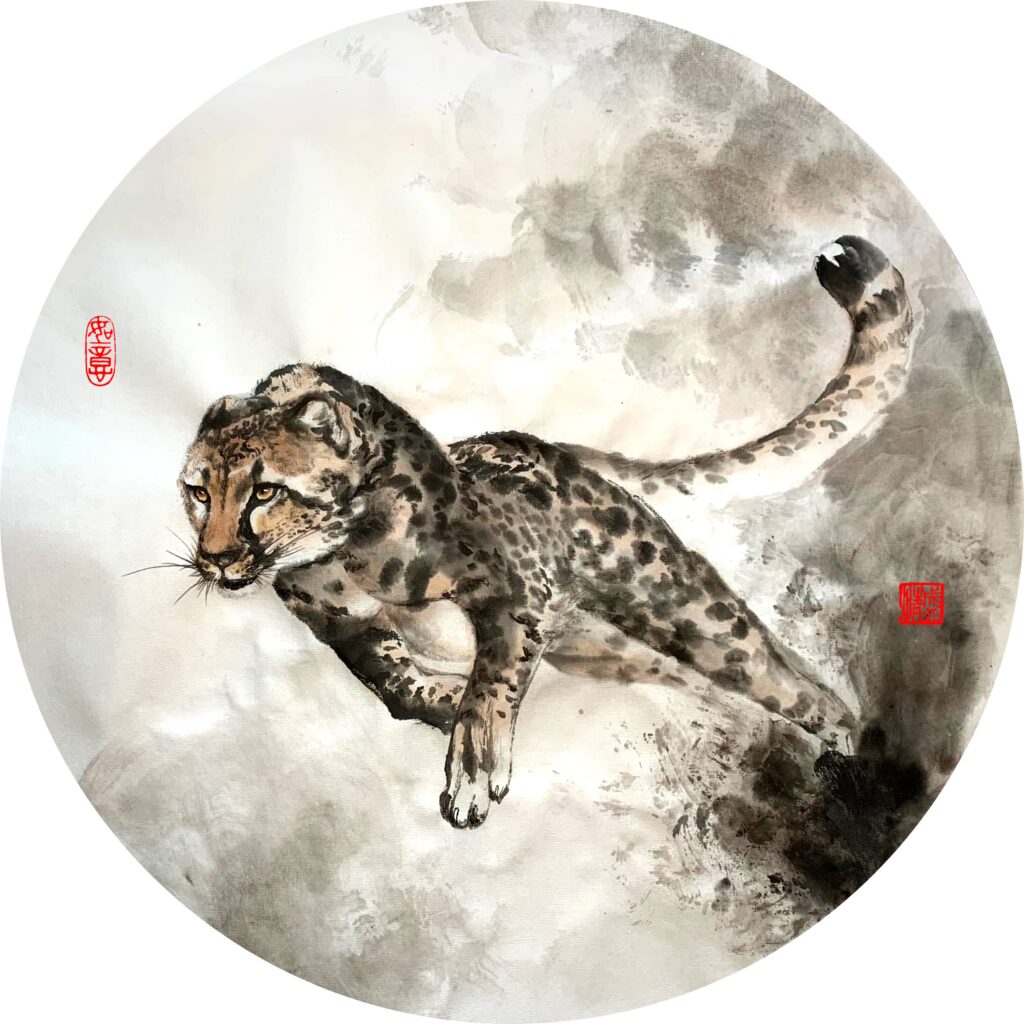In the Northern hemisphere we are embracing the autumn already. Autumn is such a pretty season, it is full of colours and is inspiring for people who love painting or photography. I certainly enjoy this period of time a lot, and I secretly love the European autumn more, because it lasts so much longer than in my hometown! In the Chinese language, the character for autumn has some interesting stories to tell, would you like to find out about its origin?
The character of autumn is “秋”, which is a character that has the “crop” on the left side and “fire” on the right. But this is only how we see it today, in the long historical evolution this character has actually changed a whole lot!
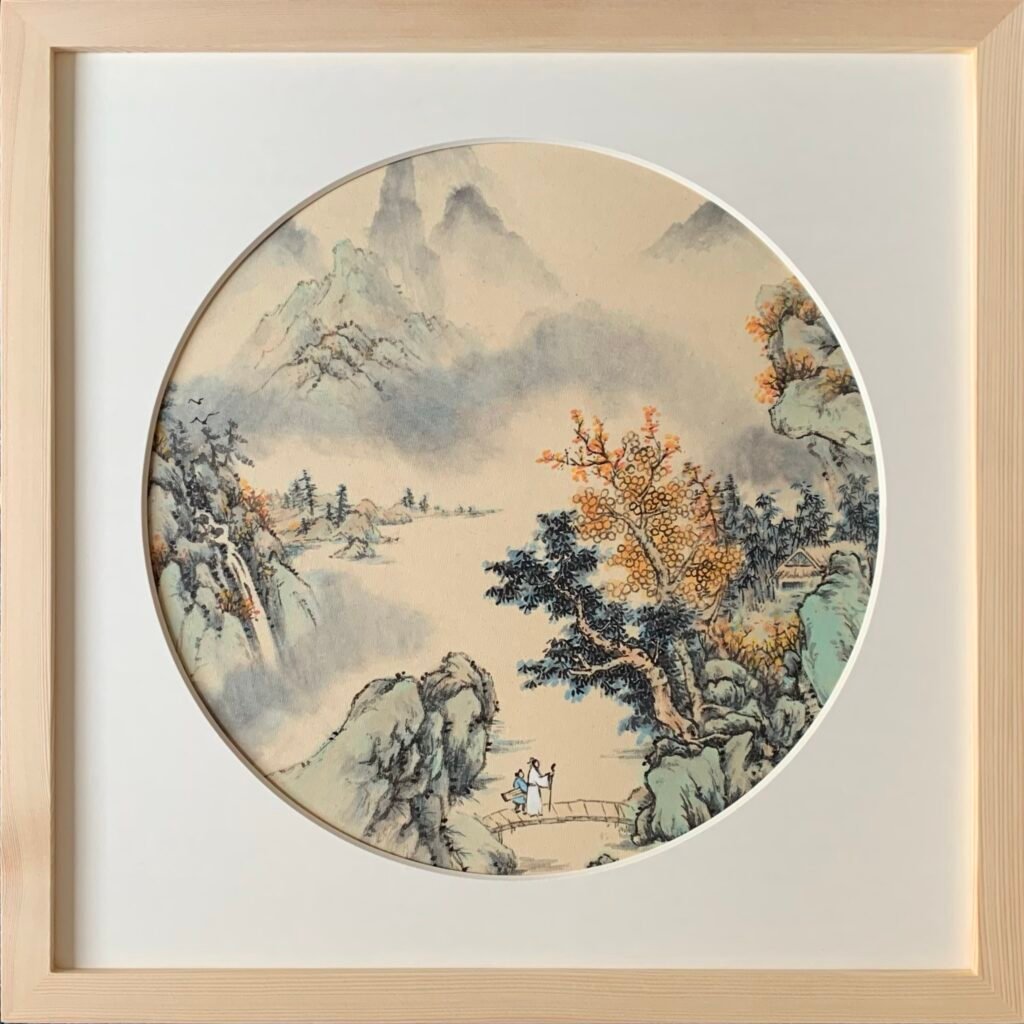
In the beginning, autumn had to do with crickets or grasshoppers (the first two examples on the left side). We can clearly see how this character used to look like in the oracle bone script below. Obviously there were various ways of writing this character in this script, but they all resemble this general shape of a bug, with the tentacles on the head and some legs on the left. Also the field in the ancient time needed rest before the next planting session, which requires burning, and “fire” became a necessary component in this character, but the bug side slowly evolved and disappeared. Some theories say that the fire was also used to kill the grasshoppers that eat crops, but either way, a new component meaning “crop” started to appear in this character.
In the Spring and Autumn period this character started to take on a “turtle” side (see the example below on the far right side), rendering it too complicated to write. The various components of this character change location occasionally, but the character does not change in the meaning.
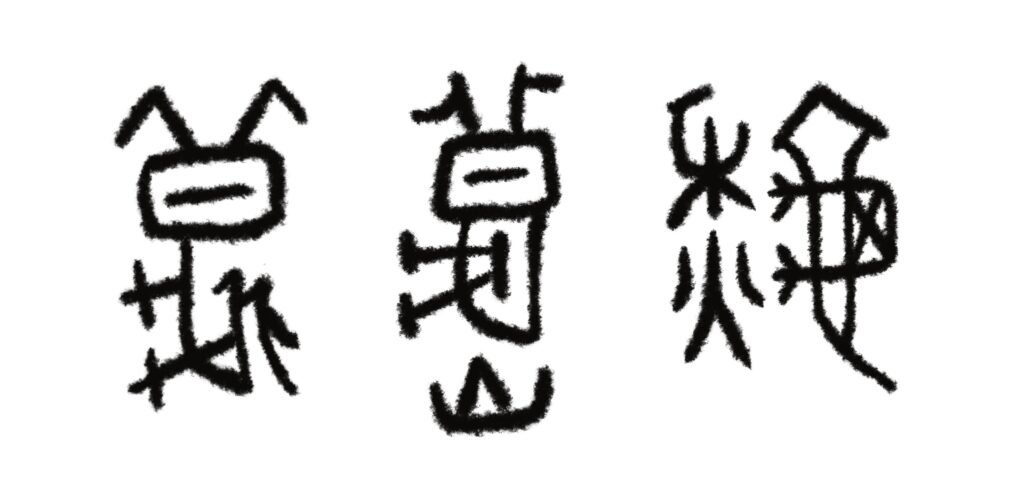
Since the union of Chinese calligraphy in the Qin Dynasty, the character of autumn started to be regulated to having two components only, the “crop” and the “fire” (see the example below on the left side). Although these two components also switch location from time to time for a long duration since then. The other two examples below shows some other variation of the Jinwen, another ancient style of script before the Qin Dynasty.

Now this character of autumn has been clearly determined to be written this exact way “秋”, however in Chinese calligraphy the two sides may still switch, for artistic purposes mostly. How do you like the final version of the character of autumn? Would you miss the bugs inside?
Enjoy such cultural discussions? Have comments? I look forward to hearing from you!
Our Online Courses
-
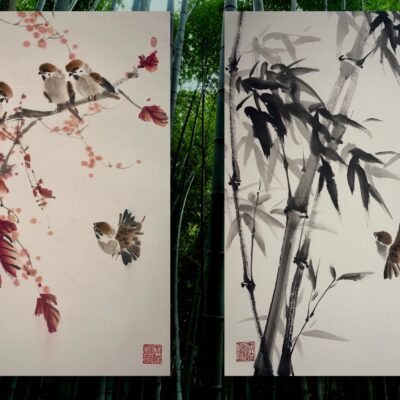 Bamboo & Sparrow Painting Course
Bamboo & Sparrow Painting Course -
 Cat Painting Course
Cat Painting Course -
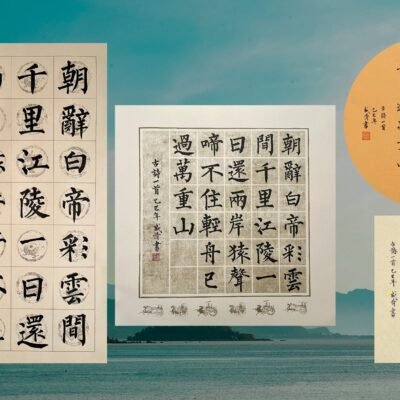 Chinese Calligraphy Regular Script Masterclass
Chinese Calligraphy Regular Script Masterclass -
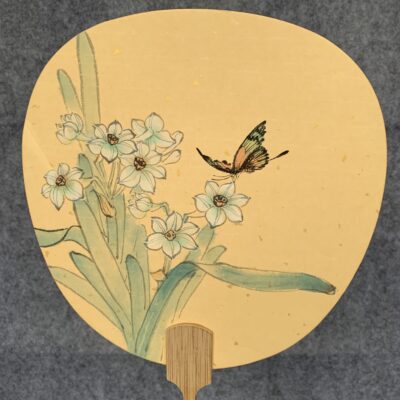 Daffodil & Butterfly Fan Painting Course
Daffodil & Butterfly Fan Painting Course -
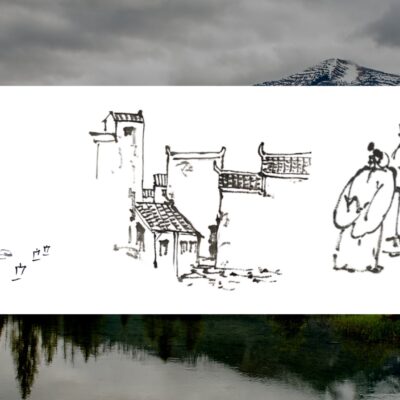 Landscape Scenery Painting Course
Landscape Scenery Painting Course -
 Magpie & Plum Blossom Freehand Painting
Magpie & Plum Blossom Freehand Painting -
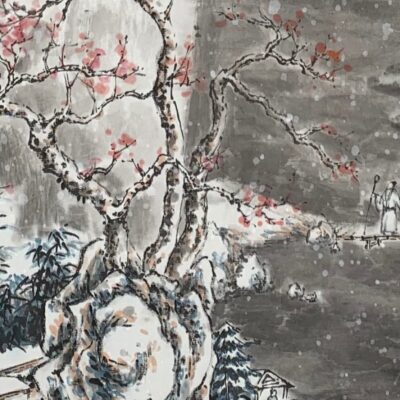 Snow Landscape Painting Course
Snow Landscape Painting Course -
 Gonngbi Painting (1) – Introduction & Lily Flower
Gonngbi Painting (1) – Introduction & Lily Flower -
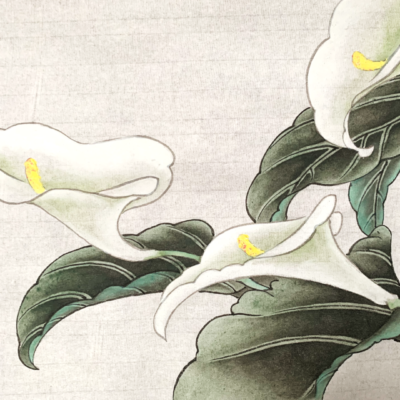 Gongbi Painting (2) – Calla Lily
Gongbi Painting (2) – Calla Lily -
 Gongbi Painting (5) – Camellia Flower & Bird
Gongbi Painting (5) – Camellia Flower & Bird -
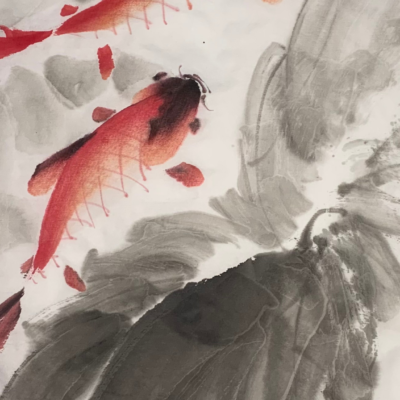 Fish Painting Course
Fish Painting Course -
 Grapes and Bees Painting Course
Grapes and Bees Painting Course
Buy Artworks | Learn Brush Painting | Learn Chinese Calligraphy
